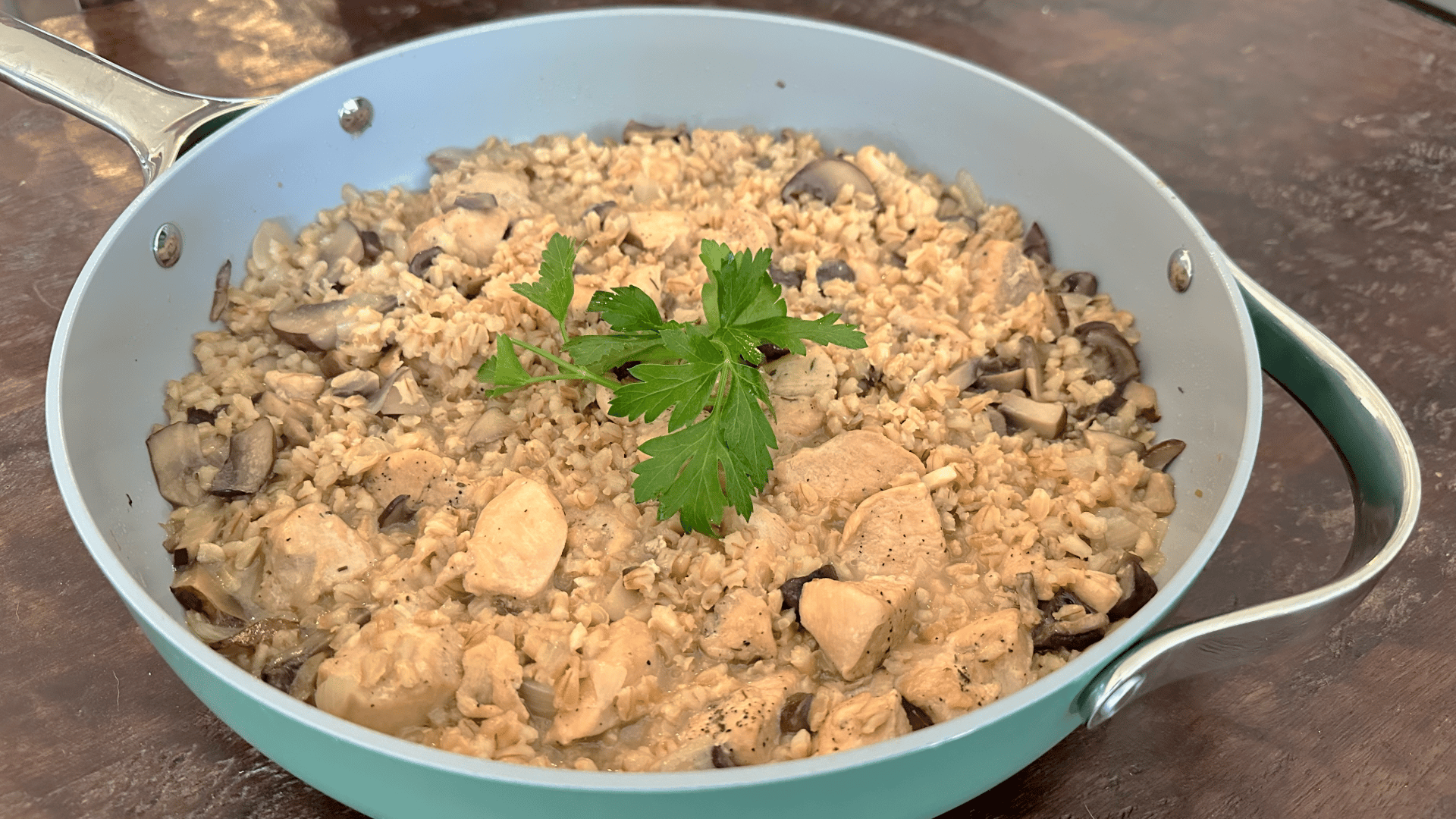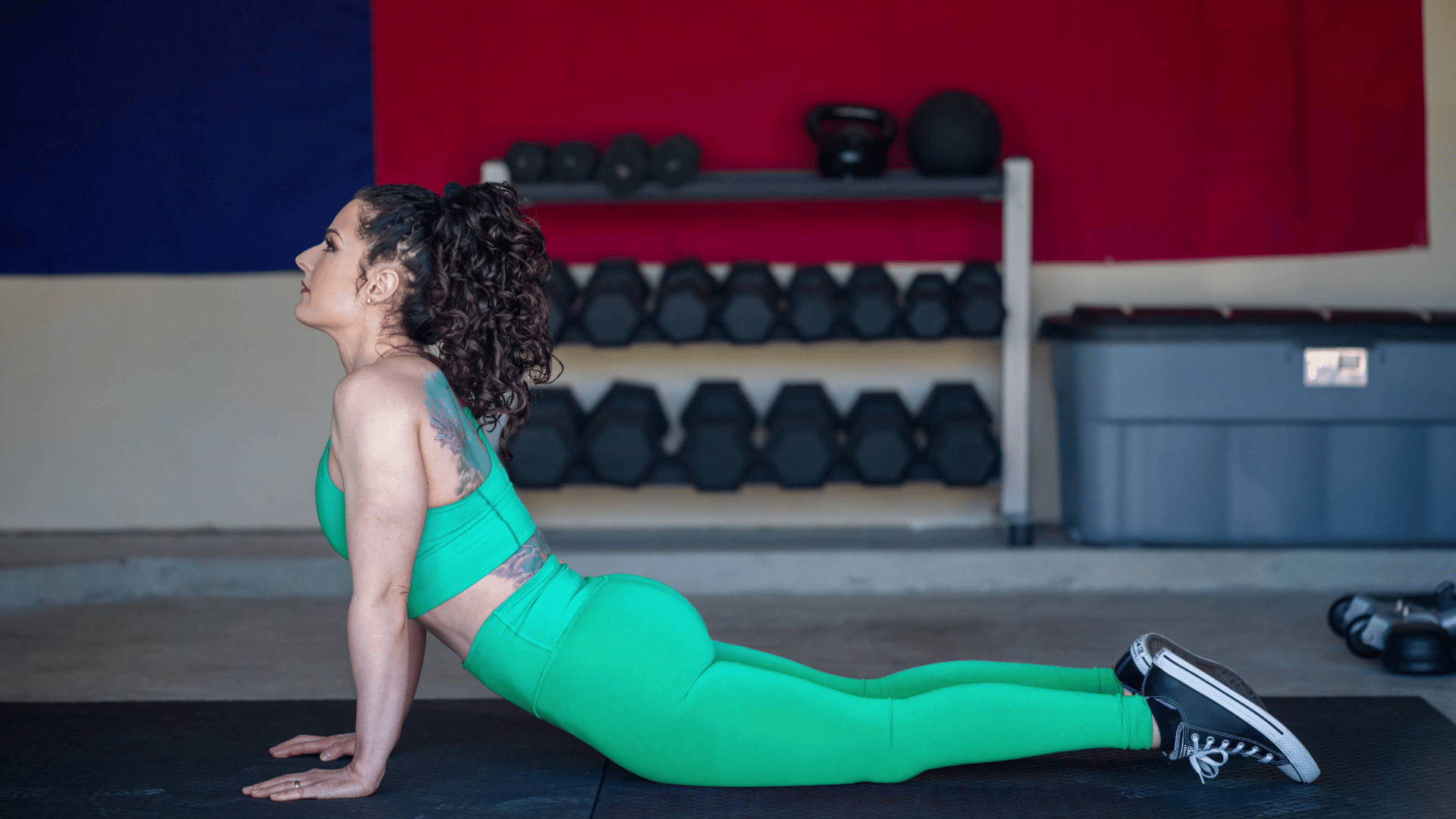- BRĒTHE WELLNESS
- Posts
- This just in, from BRĒTHE Wellness Insider
This just in, from BRĒTHE Wellness Insider
Creamy Chicken Bowl

Welcome to BRĒTHE Wellness Insider, your newest ally in the journey towards optimal health and wellness!

🍄 Creamy Chicken Mushroom Barley Skillet
Hearty, comforting, and packed with protein — this recipe brings together simple ingredients in a way that feels indulgent without weighing you down. It’s made with homemade bone broth, juicy chicken breast, sautéed mushrooms, and pearled barley for a risotto-style dish your body and taste buds will both appreciate.
🔸 Nutrition Highlights (per serving, serves 4):
Calories: ~430
Protein: 35 grams
Carbs: 32 grams
Fat: 15 grams
Fiber: 5 grams
This dish is balanced, filling, and great for post-workout recovery or a cozy, protein-forward dinner.
The chicken gives you lean protein for muscle repair and satiety.
Bone broth adds collagen, minerals, and depth of flavor without needing heavy cream.
Barley provides slow-digesting carbs, fiber, and trace minerals like selenium and magnesium.
Mushrooms offer antioxidants and immune support.
A touch of Romano cheese and milk brings it all together with creamy richness.
🔸 Ingredients:
499 g (1.1 lbs) boneless, skinless chicken breast, diced
1.5 to 2 cups mushrooms, sliced
1 small onion or 2 shallots, finely chopped
2 cloves garlic, minced
1 cup pearled barley, rinsed
2 cups homemade chicken bone broth
1 cup water
1/4 cup milk (2% or whole)
1/4 cup grated Pecorino Romano
2 tsp olive oil or butter
1/2 tsp dried thyme or Italian seasoning
Salt and pepper to taste
Optional: chopped parsley or extra cheese for garnish
🔸 Directions:
Sear the Chicken
Heat 1 tsp olive oil or butter in a large skillet over medium heat.
Season chicken with salt, pepper, and thyme.
Sear until browned on all sides, then remove and set aside.Sauté the Vegetables
Add another tsp of oil or butter to the same skillet.
Sauté the onions for 2 to 3 minutes until soft.
Add mushrooms and cook until golden and tender.
Stir in garlic and cook for another 30 seconds.Toast the Barley
Add the rinsed barley directly to the pan and stir for 1 to 2 minutes to lightly toast it.Simmer
Return the chicken to the pan.
Pour in the bone broth and water, stir, and bring to a low simmer.
Cover the skillet with a lid and reduce the heat to low.
Let simmer for 30 to 40 minutes, stirring every 10 minutes, until the barley is tender and most of the liquid is absorbed.
If the pan looks dry before the barley is soft, add another splash of hot water.Finish Creamy
Stir in the milk and Romano cheese.
Let simmer uncovered for 2 to 3 more minutes, stirring gently, until creamy and smooth.
Taste and adjust seasoning as needed.Serve
Spoon into bowls and top with a little fresh parsley or extra cheese if desired.

Why Mobility Matters More Than You Think
Most people think mobility is just about stretching, but it’s much more than that. Mobility is your body’s ability to move freely and efficiently through a full range of motion, with control. It’s not just about being flexible. It’s about how well your joints, muscles, and nervous system work together to create smooth, pain-free movement.
Here’s why this matters — especially if you care about strength, longevity, or just feeling good in your body.
🔸 Mobility keeps your joints healthy
Each joint in your body is surrounded by a capsule filled with synovial fluid — think of it like WD-40 for your joints. Regular, controlled movement helps keep that fluid circulating and reduces friction inside the joint. Without good mobility, stiffness builds up, and you’re more likely to develop issues like arthritis, tendon pain, or compensations in other parts of your body.
Science check: A 2021 study in Frontiers in Physiology found that restricted joint mobility is associated with increased risk of injury, decreased function, and faster onset of musculoskeletal disorders as we age.
🔸 Mobility reduces injury and pain
Most injuries don’t come from one big accident. They happen because of poor movement patterns that build up over time — tight hips, weak glutes, stiff ankles, or lack of shoulder control. When one area doesn’t move well, something else has to pick up the slack. That’s when pain shows up.
Fixing mobility means addressing the root cause, not just masking symptoms.
🔸 Mobility improves strength and performance
If you can't get into the right position, your body won’t recruit muscles efficiently. For example, a tight upper back or stiff hips can hold back your squat, deadlift, or even overhead press. With better mobility, you get deeper into the movement, activate the right muscles, and reduce the load on your joints.
And that’s how people get stronger without constantly feeling beat up.
🔸 Mobility supports aging well
Mobility isn't just for athletes. It’s what allows you to get up off the floor, reach overhead, squat down, walk without pain, and stay independent as you get older. The truth is, we don’t lose mobility because we age — we lose it because we stop using it.
The bottom line:
Mobility is foundational. It’s not a luxury or a warm-up add-on. It’s a long-term investment in how you move, how you feel, and how your body performs in everyday life.
If you're short on time, focus on the areas that matter most: your hips, thoracic spine, ankles, and shoulders. Just 10 minutes a day can change how you feel and move in a big way.
My story:

My story was anything but glamorous. I grew up on Long Island, New York, in an Italian family. As you can imagine, my childhood was filled with pasta, bread, and pastries. I didn’t grow up knowing much about nutrition, nor did I have anyone to guide me. I wasn’t an athlete, and I was definitely not naturally slim. In fact, it was quite the opposite. During my teenage years, I went through an awkward phase. I naturally carried a little extra weight, which was even more noticeable on my 5'2" frame.
Being bullied in school took a toll on my self-esteem and made me feel like I wasn’t worth it. This was a difficult hurdle to overcome, but over time, working out and eating better helped me develop a healthier mindset. Eventually, I worked through the lingering effects of low self-esteem caused by years of emotional abuse.
As I got older, my weight fluctuated. By my late 30s, I hit a frustrating plateau. After years of counting calories and following restrictive diets, I realized those methods just weren’t working for me anymore. Female hormone fluctuations and the constant battle of weight gain and loss left me feeling defeated. While I never let things get out of control, the changes in how my clothes fit were noticeable—and frustrating.
That’s when I began to dig deeper into health, especially the role of gut microbes. I learned how they can influence everything from metabolism and fat storage to digestion, brain function, and immune health. I focused on eating foods that optimized my body and supported my overall health.
The result? Something incredible happened. I became more in tune with my body’s natural cues, and I got into the best shape of my life. I looked and felt better in my 30s than I ever did in my 20s.
This shift wasn’t just life-changing for me; it became the foundation of what I wanted to share with others. Over the years, I’ve helped thousands of people implement these strategies.
My mission is personal. Helping people transform their lives, enjoy food, and feel confident in their own skin is something I’m deeply passionate about. Life is too short to spend it battling diets that don’t work or feeling out of control. You deserve to feel your best while enjoying every moment.
Christina Nicci

Was this email forwarded to you? You can subscribe here.